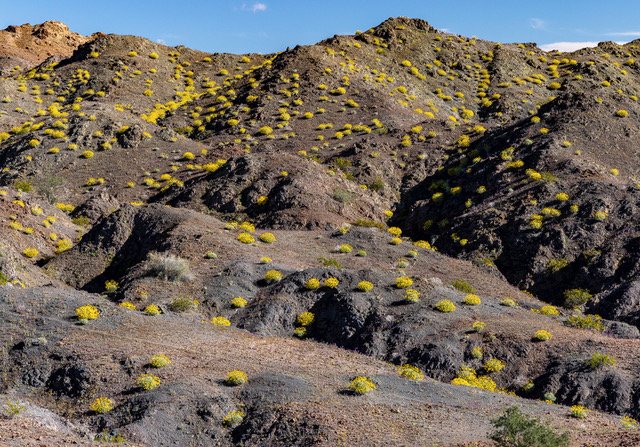A Landscape of Connections
The Kw'ts'án proposal area is part of a greater cultural landscape, connecting together Avikwalal, Palo Verde Peak, the proposed Chuckwalla National Monument, and Spirit Mountain in Avi Kwa Ame National Monument.

The proposed Kw'tsan protection area encompasses more than 390,000 acres of lands managed by the Bureau of Land Management. The boundary exhibits a portion of our ancestral homelands and incorporates the Indian Pass Area of Critical Environmental Concern (ACEC) Pilot Knob (Avikwalal), Singer Geoglyphs (ACEC), Buzzards Peak, and Picacho Peak Wilderness areas.
The rugged terrain and jagged peaks of Avikwalal (Pilot Knob), Avi Kwa Ame (Spirit Mountain), the Avi Kwa Suen (Cargo Muchachos), and the Chocolate Mountains connect us to our origins and are our living heritage. Our ancestors gifted us the role as caretakers of Mother Earth and the responsibility to protect all living beings of the natural world.
Just as the water continues to flow through the Colorado River, known in our language as Xá Áxwétta (pronounced Ha-whett-ah), we will continue to maintain the environment and ensure the optimal function of our ecosystem and the delicate balance between human activity and nature to preserve our culture and wellbeing of all life.
Water is the lifeblood to our culture, people and land. Clean and abundant water is essential for the health of ecosystems and the well-being of our relatives in plants, wildlife, and all living beings. The Fort Yuma Quechan Indian Tribe are strong advocates for sustainable practices as water is the most precious gift of life now and in perpetuity.
Our cherished relatives, many of whom are endangered species, share this sacred landscape, and include: Roadrunners (Talypó), Frogs (Xaanyé), Woodhouse Toads, Desert Tortoises, sidewinders, Yuma KingSnake, Quail, Doves, Black-Tailed Jackrabbit (Ak'úlyts), Kit Fox, Roundtail Ground Squirrels, Badger, Goose, and Grebe Chuckwalla, and the Coyote (Xatalwé). The Xá Áxwétta boundary to the east is a critical bird migration flyzone.
Our native flora that add color and character to our traditional homelands include: the Desert Agave, Saguaro, Creosote, Mesquite, Desert Milkweed, Algodones Dunes Sunflower, Arroweed, Sand Food, Desert Devil's Claw, Chocolate Mountains Coldenia, Foxtail Cactus, Munz's and Wiggins Cholla, and the Yellow Palo Verde.
As caretakers and keepers of our ancestral landscapes, the Creator situated us in between the mountains to live in harmony amongst all our relations. The pípa (People) are of the land, and it is embedded in our DNA to protect all of our nonhuman relatives. We are connected to the air, land, plants, insects, and four-leggeds that share our home. As climate change impacts our region through extreme drought and unsustainable water extraction of Xá Áxwétta and other water lifeways, the balance of our local ecosystem is increasingly destabilized. We must speak for the land and wildlife, for they have no words, and create legal protections with proper federal stewardship practices that will preserve them forever.
To achieve that balance, the Fort Yuma Quechan Indian Tribe will pursue a stewardship agreement to manage these lands and seek to enter into a Memorandum of Understanding with the Department of the Interior.
The establishment of a federal-Tribal partnership will enhance current state and federal land management practices and rectify past management inadequacies that have harmed the integrity of our ancestral homelands and the health of our non-human relatives.

